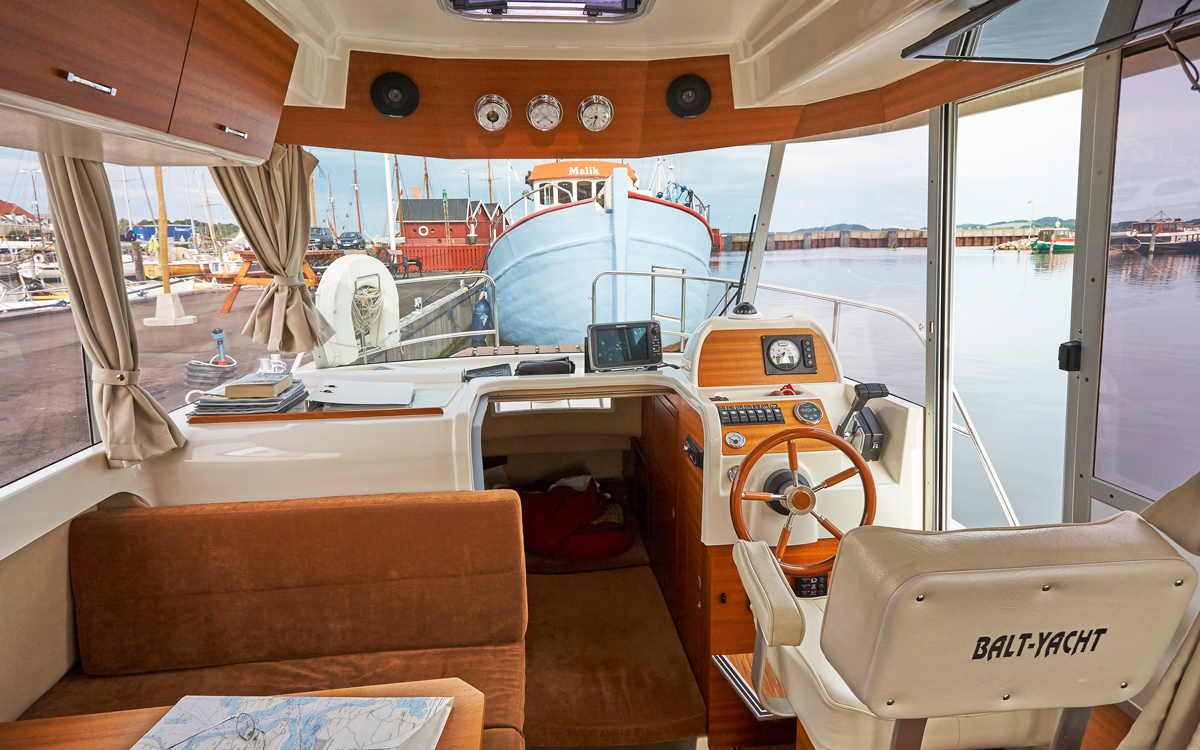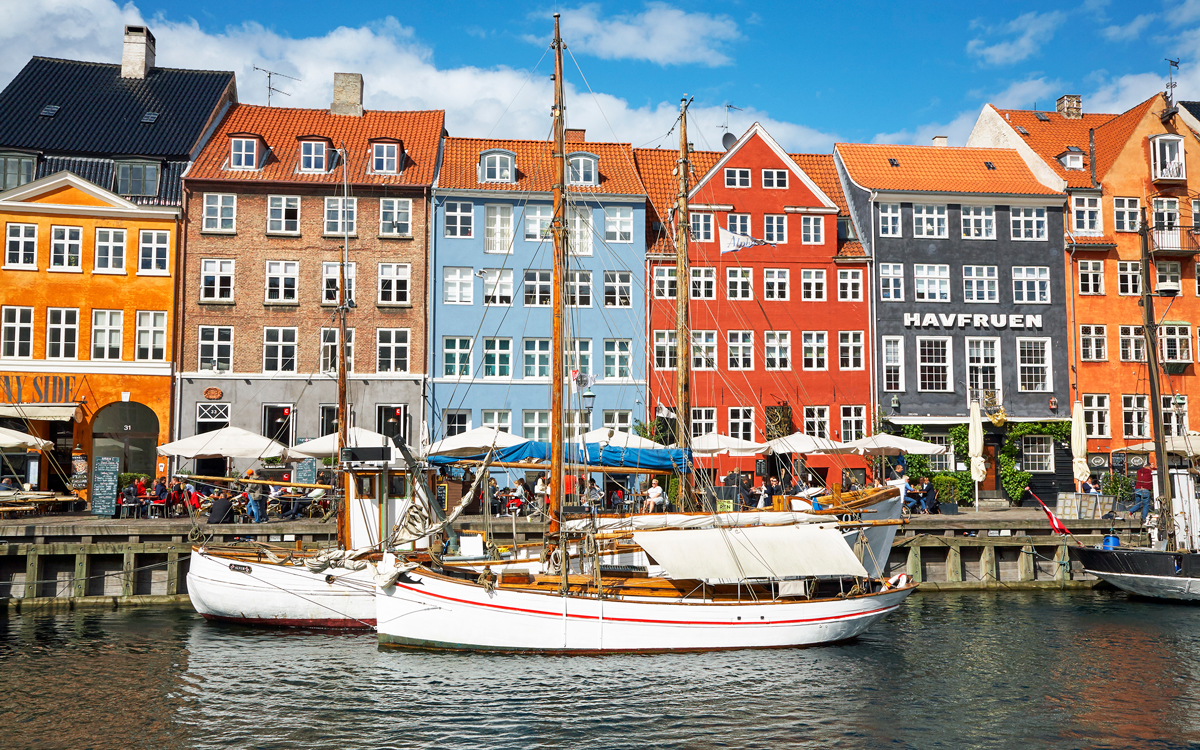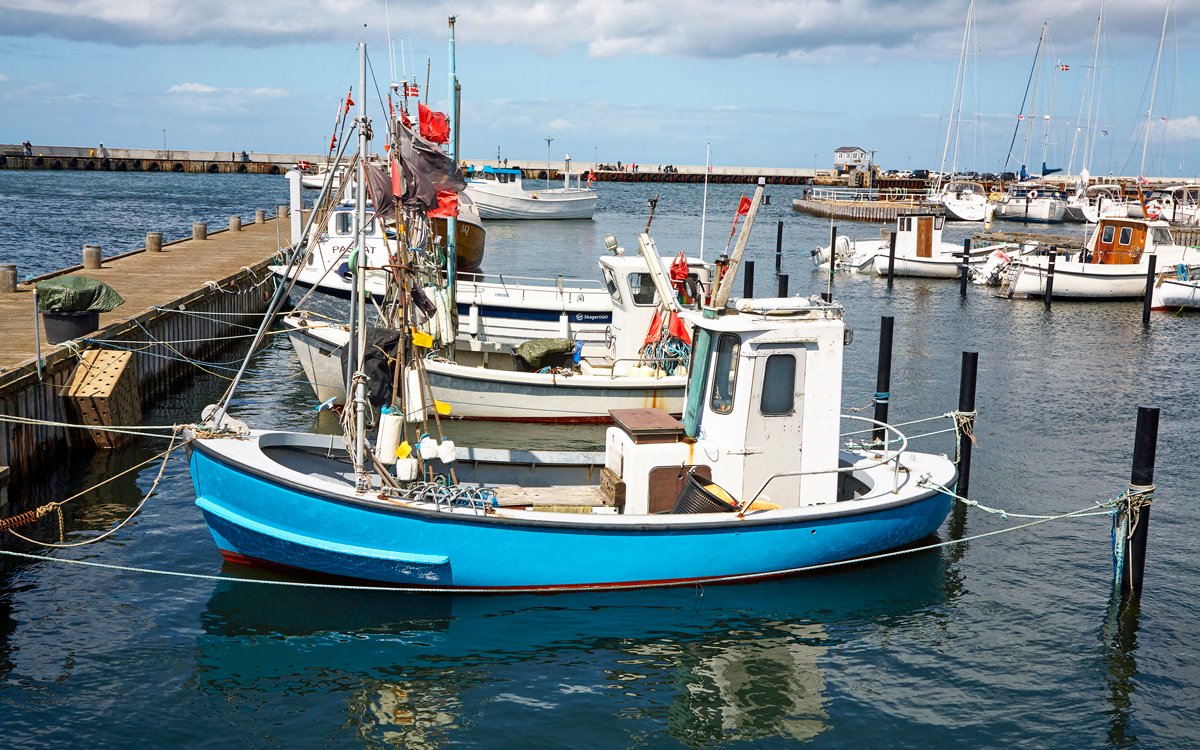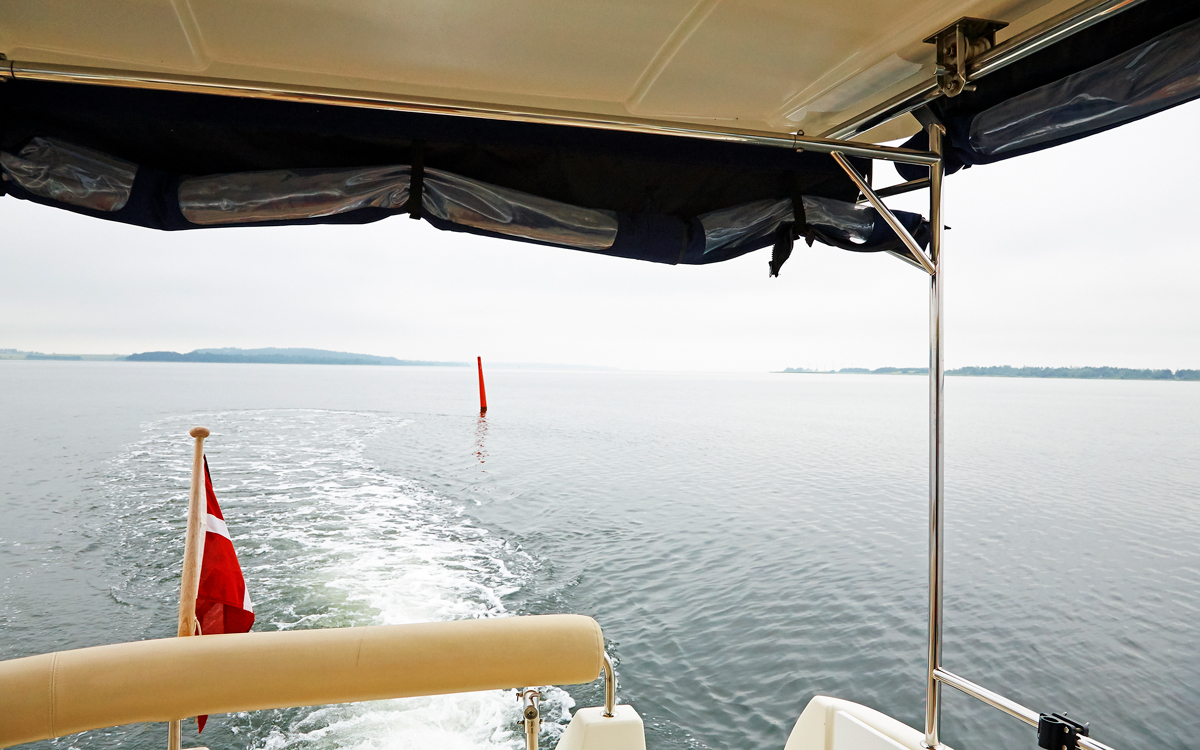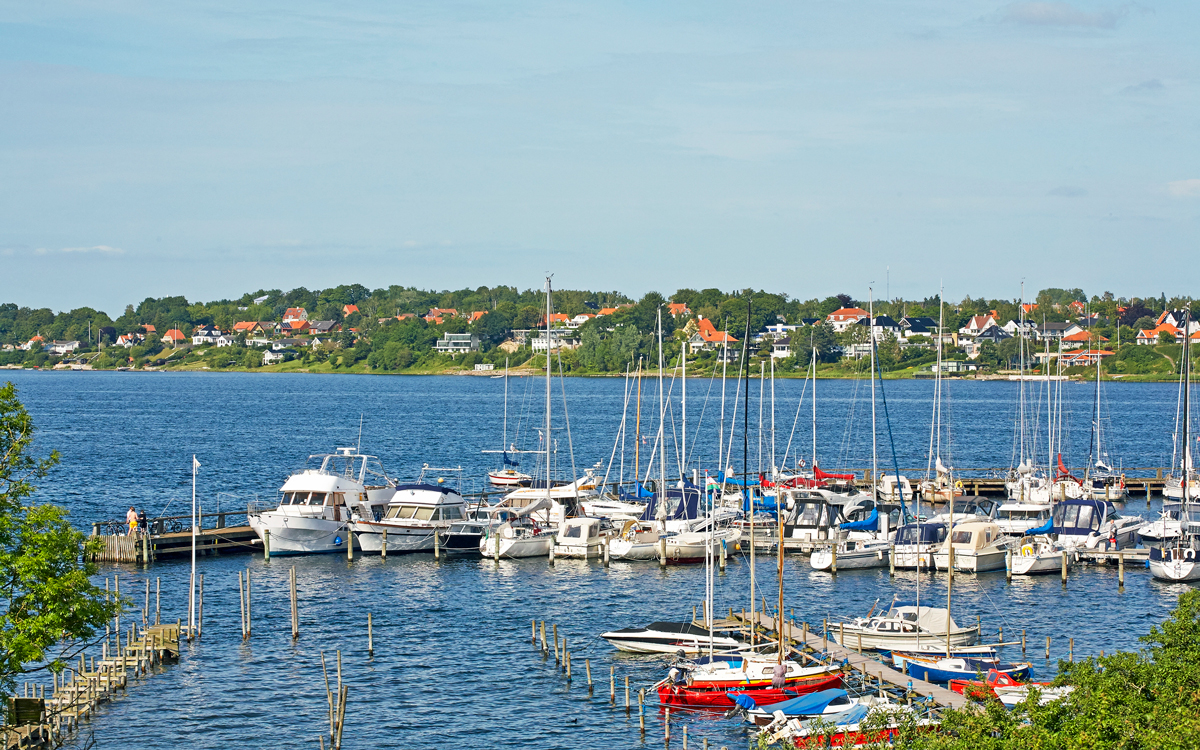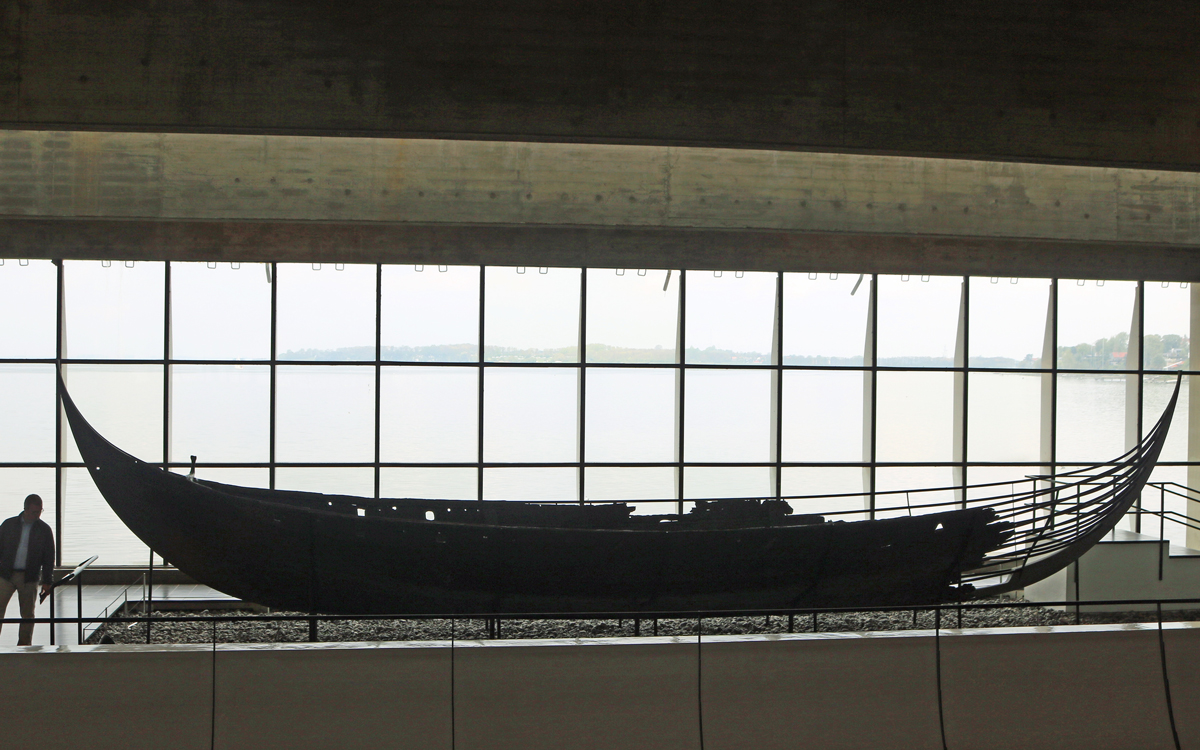Peter Cumberlidge visits Denmark, his favourite escape, which just so happens to be perfectly designed for boating
Denmark is one of my favourite escapes, partly because this civilised country is perfectly designed for cruising. An inviting jigsaw of islands spreads out in almost tideless waters between Sweden and the Jutland peninsula. Attractive sounds separate the islands and the extravagantly indented shores cry out to be explored by boat.
Despite the latitude, summers can actually be sunnier and more settled than at home, often influenced by continental anticyclones. Jane and I have enjoyed several coast-hopping cruises up to Denmark, yet hadn’t been back for a while until June 2017, when we chartered a small motor boat for a week.
Some Danish friends had introduced us to Fjordland, run by Sanne and Kenneth Svanholt, whose Suncamper 30 cruisers are based at Holbæk on the main island of Sjælland. This salty old trading port lies near the head of the Isefjord, a beautiful sheltered inland sea not far west of Copenhagen.
Suncampers are built in Poland for the northern lakes and designed for lazy summer pottering. They look rather caravan-ish but are ideal for simply chilling out. Fjordland charters them for meandering between pretty havens in the Isefjord and neighbouring Roskilde Fjord. Our plan was a week’s leisurely one-way cruise in this lovely boating area, starting at Holbæk and finishing at Roskilde, the original Viking capital of Denmark.
Our boat had a single Yanmar engine, a bow thruster, a large-screen chartplotter and all mod cons, including hot-air heating for early or late-season cruising. But because we were here around midsummer, we relished the long warm evenings in our comfortable dining cockpit.
Holbæk
Early on our first morning, we left Holbæk Marina and nosed into the fishing harbour where all kinds of boats, traditional and modern, lay at timber staging or rustic posts in typical Danish style. It was easier to shop from here and we ambled round the quays taking in the scene.
Article continues below…

Cruising Norway: Exploring Stavanger Bay and beyond
In our latest feature, Peter Cumberlidge explains why Stavanger Bay is the perfect starting point for boaters interested in cruising

VIDEO: Princess V39 to Russia – Part 1
John Boyle takes his Princess V39 into hitherto unexplored territory – the Baltic Sea
The sun warmed the red and yellow waterfront buildings, glowed on varnished masts and lit up a row of sleek white motor yachts. A ferry bustled in through the pierheads and cars and bikes streamed off – commuters from a nearby island going to work.
At the supermarket we stocked up with Danish delicacies – jars of marinated herrings, tubes of delicious smoked cod’s roe that goes so well with rye bread, and slices of nutty Esrom cheese. Our boat’s fridge could hold plenty of Tuborg Classics – in Denmark, it’s usually the right time for a beer – and also a bottle of Aalborg schnapps which, served ice cold in shot glasses, slips down a treat with anything fishy.
Thus equipped with the essentials of life, we set off down Holbæk Fjord in glassy conditions, following a trail of slim red and green buoys towards a hazy horizon.
Danish fjords
The fjords in Denmark are nothing like those deep looming chasms that penetrate Norway’s mountainous hinterland. Danish fjords spread and divide through the rural landscapes of a much softer country. For boating, these tranquil expanses are like magic carpets that float you effortlessly between fascinating harbours, some tiny and quite shallow, others big enough for ships and trawlers.
Together, Isefjord and Roskilde Fjord have over 20 charted harbours, dozens of small grassy islands and many natural anchorages offering peace and seclusion out in the wilds. The Berthed at Orø’s boat club narrow entrance to this cruising area cuts into the north side of Sjælland between Hundested and Rørvig before opening out to a 10-mile width.
Hundested was once the most important fishing port in Denmark, with direct access to the Baltic and a clear run up the Kattegat to the North Sea. Rørvig is a holiday town with some fine beaches, a picture-postcard harbour and a terminal for the Hundested ferries.
Down to Ejby Havn
At the mouth of Holbæk Fjord, we curved south and a touch east for a distant west-cardinal buoy guarding a shoal. Open water depths are generally between five and seven metres and in some harbours, we noticed a tidal range of maybe half a metre. Three Danish charts cover these waters in detail and the south part of Roskilde Fjord needs careful pilotage. Now, once we’d passed the skinny west-cardinal, our track was straightforward down to Ejby.
Low timber jetties enclose this sleepy harbour, which was difficult to make out until we were virtually opposite the entrance. Then it was a dog-leg through the gap, a nifty U-turn and we rounded up next to a one-man open fishing boat. When the engine stopped, this remote spot was completely silent until a fish jumped, its splash rippling across the still water.
A few houses and red timber shacks fringed the harbor but nobody was moving. Wandering ashore, we saw a miniature museum dedicated to the history of Ejby Havn. Eel fishing was once a major industry in these fjords and sea trout still thrive here.
Danish smoked eel with scrambled egg is an open-sandwich classic, scrumptious chased down with freezing schnapps. Smoked sea trout is also the biz, thinly carved on smørrebrød and garnished with dill. Making a note to lay in some eel, we lunched on succulent herring and, since we were driving, sipped Tuborg without any sharpening akvavit.
Orø island
Later we headed back north to where Orø island splits the Isefjord into two navigable sounds. Orø covers five square miles and has a population of around 800, though there are also many summer houses. The harbour is on the south-west corner, jutting out from some marshy coastal shallows.
The Holbæk ferry docks at the outer pier and we squeezed past it to enter a cramped basin packed with local boats, except for one empty stretch of jetty dead ahead. It looked like a tight fit, but our quirky little ship slid in with a smidgen to spare either end.
Sociable Orø had a very welcoming boat club in a waterside chalet. We were soon relaxing on its veranda, drinking beers with half a dozen of its genial members. All of them spoke good English, with the musical Danish lilt, which is so engaging. We received useful pilotage information, a restaurant tip for Roskilde and various colourful views on international affairs, including Brexit.
Strolling ashore, we followed a leafy lane to Bybjerg village and found a general store and a striking white church with a red tiled roof. There were locals cycling about but few cars, and in warm drowsy sunshine, the island looked idyllic for long summer hols.
North up the fjord
Although the weather stayed quiet next morning, freshening westerlies were forecast, so we left early to follow the west side of the fjord up to Hundested and the open sea. With our shallow draught, we could tuck in quite close should the wind brisk up.
From Orø Harbour, you curve well out into the sound before turning north to avoid a broad area of shoals and a flat island. There are similar shallows on the west side too but once Orø was astern, we could keep well over to port to watch the scenery roll by.
We passed some kind of military base with a ship alongside and then the coast was more pastoral – lush fields, ornate Danish barns and stretches of mixed woodland. In the north-west crook of the fjord we nudged into a modern marina complex at Nykøbing, pleasant enough but rather soulless with rows of apartments. We lay at the east quay for a bite of lunch before pressing on.
Staying inshore round to Rørvig, we took the buoyed channel out into the Isefjord entrance and scuttled across the strait to Hundested, with whitecaps livening things up. Hundested is a sizeable port with several interlocking basins, and we found a snug finger berth in the inner yacht haven.
Hundested
We enjoyed the vibes of this working harbour where ocean trawlers once unloaded vast catches and were recharged with ice, stores and fuel ready for sea again. Hundested is also a holiday town with white sandy beaches facing the Baltic. Cafés and restaurants surround the marina, one of which served superb smoked eel smørrebrød garnished with Danish red caviar.
Mooching round the quays after breakfast, I heard a boat engine start up and settle down to a slow, rhythmic, gently coughing exhaust beat that I’ve always associated with Scandinavia. Following this evocative music I suddenly came across its source on dry land, in a specially built museum hut.
Several enthusiasts were gazing in awe at a masterpiece of marine engineering – a tall, solidly built two-cylinder, two-stroke 58hp Hundested fishing boat engine turning at 500rpm. These robust machines were built here from 1928 until 1990 and used in fishing and workboats. We’ve often heard Hundesteds in Danish harbours and it was a nostalgic pleasure to see one in action.
Into Roskilde Fjord
Two miles further south, restful Lynæs Marina is backed by low wooded cliffs, the most attractive port of call for visitors near the mouth of the Isefjord. Lynæs beach is popular with kitesurfers and we had to dodge several while turning in towards Roskilde Fjord entrance narrows.
The surfers were revelling in the continuing strong westerly and we surfed a bit ourselves through the half-mile gap where a diminutive car ferry shuttles across. A smart Baltic ketch was motoring out, pitching into the short head seas. To starboard, the ferry was just leaving from Kulhuse Harbour.
The fjord opens out to an almost landlocked lake two miles wide. Ahead we saw factory chimneys at Frederiksværk steelworks, once renowned for producing solid high-quality plates for shipbuilding. Huge barges came in here to deliver raw materials and load finished steel.
The lake curves south to an invisible exit, its west shore mostly wooded with marshy coastal shallows. It felt like a secret water, the sea safely shut out, and you could see why Viking ships were based here a dozen centuries ago. Even now, there is something mystical about Roskilde Fjord and during our trip we saw several replica longships flitting about.
The largest Viking ships were over 30m overall and carried 60 ferocious raiders. Open to the elements, they must have felt exposed at sea but their meagre draught let them venture far up winding rivers. Longships could be hauled ashore and easily relaunched for fast getaways.
A famous museum at Roskilde shows five fantastically preserved ships discovered at nearby Skuldelev in 1962. They’d been deliberately sunk to block the route to Roskilde and protect the settlement from attack by sea.
Down to Frederikssund
A skimpy buoyed cut leads out of the lake, flanked by acres of drying flats. The next open reach glides down to a road bridge at Frederikssund, the name of both the sound and the market town on its east side. The bridge opens every half hour, though Kenneth had said that we’d slide underneath it.
Before going through, we followed a delicate channel into charming Kignæs Havn, where another convivial boat club welcomed us for lunch. Here, we tucked into slices of juicy roast pork with the meat meltingly soft and the crackling golden crisp. Only Danes can cook pork like this and it makes a sumptuous smørrebrød with red cabbage and sharp pickled cucumber.
Beyond the bridge, we turned into Frederikssund old harbour and moored opposite a jaunty old steamboat called Skjelskør. For half a century, this sturdy vessel connected south-west Sjælland with Agersø and the Omø islands. The service closed in 1962 but Skjelskør, one of Denmark’s last coal-burning ferries, was saved by the Danish Association for the Preservation of Old Ships.
On Sundays in the school holidays, she puffs off down the fjord on a nostalgic hour’s voyage. Replenishing our stores at a nearby supermarket, we hopped south another half mile to spend a night at Frederikssund Marina, a soothing rural haven with open views and a grand sense of space.
Skuldelev & Jyllinge
For this cruise we were using a well-thumbed copy of Mark Brackenbury’s Baltic Southwest Pilot. Brackenbury notes that the southern reaches of Roskilde Fjord “are among my favourite waters anywhere in Europe,” and we soon understood why.
At Skuldelev, we found a wonderful harbour out in the country, with big skies and rich pasture fading into the distance. Lying at a rickety pontoon, we were genuinely away from it all, with no habitation in sight, no mobile signal and no WiFi. The largest boat was a Princess 35. A low-key club keeps this mini paradise going, repairing winter damage and replacing any rotten stakes. We posted our coupon for dues through their letter box.
Jyllinge Havn was another tranquil retreat in glorious surroundings, where local boats dodge between bird reserve islands and patches of saltings. A yacht owner we met there had cruised to England as far as Dartmouth and knew one of our regular pubs! An avid Anglophile, he was particularly fond of fish and chips.
The Southern sounds
From Jyllinge, we skirted east of Eskilsø island and emerged into a glittering lagoon dotted with sails. Punching a headwind, we had a splashy ride across to the west shore, then curved south through a magnificent sound towards Herslev Harbour, a popular dinghy racing centre.
In the spectacular outer bay, Lasers and Hobie Cats were whizzing around in the lively breeze as we steered for a conspicuous white beach. Herslev was a great place to stay, with stunning panoramas and plenty of exuberant racing to watch.
The next day, we cruised right around the strangely shaped Herslev peninsula and savoured a night at anchor inside a boomerang-shaped islet called Sivholm. We had this wetlands hideaway completely to ourselves, apart from two languid swans and a flotilla of grebes.
Roskilde
This elegant old city at the head of the fjord is graced by the soaring twin spires of an impressive brick cathedral, visiblefrom far out in the approaches. Various yacht harbours merge along the shore, creating a delightful waterside walk. Roskilde was the finale of our one-way charter and we arrived with time in hand to visit the Viking Ship Museum and also enjoy a tourists’ day out in Copenhagen, less than half an hour by train.
The museum’s harsh concrete exterior might put you off going in, but the exhibition is awe inspiring. To gaze upon these once-powerful 11th-century cargo and warships that look so startlingly real gives you an eerie perspective on time. The painstaking operation to recover and stabilise these graceful hulls has caught the imagination of millions of visitors.
After our Copenhagen city day, Sanne drove us back to Holbæk where we’d left our car. We’d become quite attached to our tubby little boat, which had carried us comfortably around one of Denmark’s finest cruising areas at modest cost. It was an enchanting week, which gave us a vital Danish fix.
Getting to Holbæk
Preferring relaxed sea travel to airports, we took the car on a Stena Line overnight ferry from Harwich to the Hook of Holland. This route gives you time for dinner on board, a comfy night’s sleep and a civilized morning start. We drove through Holland and Germany on the A1 with a pleasant ferry interlude from Puttgarden to Rødby in Denmark, arriving in Holbæk early evening. A week later we returned to Harwich the same way.
First published in the November 2017 edition of Motor Boat & Yachting.




